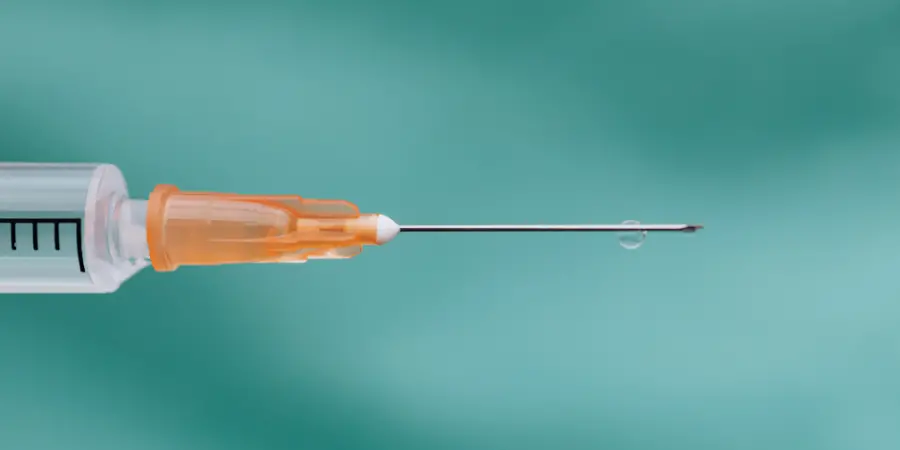
Written by:

Medically Reviewed by:
Last Updated:
October 13th, 2025
Ketamine addiction
What is ketamine?
Ketamine was first developed in the 1960s as an anaesthetic, designed to put patients into a safe state of sedation without the same risks that older drugs carried. It was quickly taken up in both human and veterinary medicine because it could be used effectively during surgery and emergency procedures.
In recent years, very small doses of ketamine and its derivative, esketamine, have also begun to be studied and applied in the treatment of mental health conditions such as depression, particularly when other therapies have failed.
In the UK, ketamine is a Class B controlled substance under the Misuse of Drugs Act 1971. This means that possession of ketamine is illegal and can result in up to five years in prison, an unlimited fine or both. Supplying or producing ketamine carries even harsher penalties, with a maximum of fourteen years in prison, alongside fines.

How does ketamine affect the body and mind?
It can sound strange to hear that anyone would want to use ketamine, especially when it has long been described as a horse tranquilliser. Yet the way it affects both the body and the mind explains why some people experiment with it, even as it carries heavy risks.
If ketamine treats depression, is it harmless?
For years, ketamine carried the label of a dangerous club drug in the UK and was tied to chaotic nights out and a string of harmful consequences. Now, however, the same substance is finding a place in hospital rooms and private clinics as a treatment for mental health conditions that do not respond to conventional care.
In clinical practice, doctors are turning to very small doses of ketamine or to esketamine, a close relative designed for medical use. Studies show that these sub-anaesthetic doses can have powerful effects, reducing depression symptoms and even suicidal thoughts within hours. That speed of action has been called a breakthrough by some UK psychiatrists, particularly for patients whose lives have been defined by treatment-resistant depression.
The treatment takes place in a tightly controlled setting where side effects such as dissociation or blood pressure changes are carefully monitored by professionals.
It is this contrast that leaves many people confused: how can a drug that once symbolised everything dangerous about club culture now be framed as a lifeline for mental health? The answer lies in the context of use.
When administered under medical supervision with pharmaceutical-grade products, ketamine has a safety net. Outside those settings, the drug is taken in unmeasured amounts, with no oversight and no guarantee of purity. What is sold as a white crystalline powder on the street could contain adulterants or stronger concentrations than expected, leaving users exposed to significant risk.
In fact, the number of people aged 16–59 reporting ketamine use in England and Wales reached around 299,000 in 2022-23, the highest ever recorded. Among young adults, the growth is even more striking, with 3.8% of 16–24-year-olds saying they had taken ketamine in the past year, a figure that is roughly three times higher than a decade ago. These patterns are feeding directly into treatment services.
- The share of new treatment entrants with ketamine problems rose from 1.6% to 2.3% between 2022-23 and 2023-24.
- In absolute terms, 3,609 adults began treatment for ketamine misuse in 2023-24, compared with just a few hundred a decade earlier.
Clinics, both within the NHS and in the private sector, have noticed the shift, reporting steady increases in people, especially younger people, seeking help for ketamine addiction. This shows that while medical ketamine use may be carefully managed and cautiously hopeful, the rise of illicit use is creating a parallel crisis that treatment services are struggling to contain.

Is a ketamine addiction dangerous?
We know that ketamine addiction is becoming more common in the UK, with rising numbers of people seeking treatment each year. The statistics highlight the growth but they do not explain what makes this particular addiction so concerning. To understand the dangers, we need to look at the direct impact on health, the risk of dependency and the pressure placed on emergency services.
Over time, the bladder loses its ability to stretch, shrinking to a fraction of its usual capacity. The end result for some has been life-altering surgery, including bladder removal or kidney transplants.
What are the signs of ketamine addiction?
Spotting the signs of ketamine addiction is crucial, especially if you or someone close to you is using the drug regularly. The earlier these warning signals are recognised, the quicker action can be taken to prevent the situation from worsening. Educating yourself on the potential signs allows you to step in at the right time and seek the right support.

- Frequent urinary problems, such as pain or difficulty passing urine
- Persistent abdominal or bladder discomfort
- Noticeable weight loss or changes in appetite
- Lingering fatigue or low energy after use
- Poor coordination and frequent unsteadiness when moving
- Memory gaps or struggles with concentration
- Ongoing feelings of depression or low mood
- Heightened anxiety, especially when not using ketamine
- Confusion or disorientation during and after use
- Preoccupation with obtaining or planning the next dose
- Using ketamine in riskier settings or at inappropriate times
- Struggling to cut down despite repeated attempts
- Withdrawing from family, friends or responsibilities
- Spending increasing amounts of money on the drug
- Neglecting work, studies or hobbies once important
If you have noticed a few of these signs, it is worth taking the time to put a spotlight on your relationship with ketamine, which we will do in the next section through a self-questionnaire.
Do I have a ketamine addiction?
If you have noticed some of the signs described in the previous section, there is no harm in checking in with yourself and taking a closer look at your relationship with ketamine. One of the most effective ways to do this is by answering the following questions honestly. They are not a formal diagnosis but can help you reflect on whether your use has moved into risky territory.
- Do you feel that you need to use ketamine more often or in larger amounts to get the same effects?
- Have you tried to cut down or stop using ketamine but found it difficult?
- Do you experience strong cravings or spend a lot of time thinking about using ketamine?
- Has ketamine use started to interfere with work, studies or relationships?
- Do you continue to use ketamine even when it causes health issues or emotional distress?
- Have you found yourself withdrawing from friends, family or activities because of your ketamine use?
If you answered yes to one or two of these questions, it may be worth checking in with professionals to see if extra support is needed. Taking this step can give you clarity and ensure that any problems are addressed before they become harder to manage.
Is there help available for a Ketamine addiction?
If you or someone you care about has reached the point where ketamine use needs extra support, it is important to know that help is available. You do not have to manage the situation on your own, and speaking up is often the first step toward real change.
At UKAT, we provide specialist support for people facing ketamine addiction. The process usually begins with an assessment that helps our team understand your situation and create a plan that fits your needs. From there, ketamine detox can be arranged in a safe environment, followed by therapy during ketamine rehab that gets to the root of why ketamine became a part of your life. Aftercare is also offered to make sure progress continues once you leave our care.
The most important step is reaching out. A simple conversation with our team can give you clarity on what help might look like and whether treatment is the right next move for you or your loved one. Contact us today.

Frequently asked questions
(Click here to see works cited)
- Li, Linda and Phillip E. Vlisides. “Ketamine: 50 Years of Modulating the Mind.” Frontiers in Human Neuroscience, vol. 10, no. 612, Nov. 2016, https://doi.org/10.3389/fnhum.2016.00612
- Vasiliu, Octavian. “Esketamine for Treatment‑Resistant Depression: A Review of Clinical Evidence (Review).” Experimental and Therapeutic Medicine, vol. 25, no. 3, Jan. 2023, https://doi.org/10.3892/etm.2023.11810
- Gitlin, Jacob, et al. “Dissociative and Analgesic Properties of Ketamine Are Independent.” Anesthesiology, vol. 133, no. 5, Nov. 2020, pp. 1021–28, https://doi.org/10.1097/ALN.0000000000003529
- Coull, Jennifer T., et al. “Ketamine Perturbs Perception of the Flow of Time in Healthy Volunteers.” Psychopharmacology, vol. 218, no. 3, May 2011, pp. 543–56, https://doi.org/10.1007/s00213-011-2346-9
- Muetzelfeldt, L., et al. “Journey through the K-Hole: Phenomenological Aspects of Ketamine Use.” Drug and Alcohol Dependence, vol. 95, no. 3, June 2008, pp. 219–29, https://doi.org/10.1016/j.drugalcdep.2008.01.024
- Devlin, Hannah. “Ketamine-like Drug for Depression Could Get UK Licence within the Year.” The Guardian, The Guardian, 12 July 2019, www.theguardian.com/science/2019/jul/12/ketamine-like-drug-for-depression-could-get-uk-licence-within-the-year
- News, Neuroscience. “Ketamine Therapy Swiftly Reduces Depression and Suicidal Thoughts – Neuroscience News.” Neuroscience News, 24 Dec. 2021, neurosciencenews.com/ketamine-depression-19836/ Accessed 29 Sept. 2025.
- Hunt, Elle. “The Agony of Ketamine Addiction: ‘I Felt like I Was Peeing Glass.’” The Guardian, The Guardian, 5 Nov. 2024, www.theguardian.com/society/2024/nov/05/the-agony-of-ketamine-addiction-i-felt-like-i-was-peeing-glass
- Devlin, Hannah. “Ketamine’s Move from Club to ‘Chill-Out’ Drug Is Sign of a Troubling Culture Shift.” The Guardian, The Guardian, 13 Jan. 2025, www.theguardian.com/society/2025/jan/13/ketamine-move-club-to-chill-out-drug-troubling-culture-shift
- Office for Health Improvement & Disparities. “Adult Substance Misuse Treatment Statistics 2023 to 2024: Report.” GOV.UK, 28 Nov. 2024, www.gov.uk/government/statistics/substance-misuse-treatment-for-adults-statistics-2023-to-2024/adult-substance-misuse-treatment-statistics-2023-to-2024-report
- Srirangam, S. and J. Mercer. “Ketamine Bladder Syndrome: An Important Differential Diagnosis When Assessing a Patient with Persistent Lower Urinary Tract Symptoms.” Case Reports, vol. 2012, no. sep26 1, Sept. 2012, pp. bcr2012006447–47, https://doi.org/10.1136/bcr-2012-006447
- “The Rise of Ketamine Use in the UK | AlphaBiolabs UK.” AlphaBiolabs, 28 Oct. 2024, www.alphabiolabs.co.uk/blog/rise-ketamine-use-uk/ Accessed 29 Sept. 2025.


